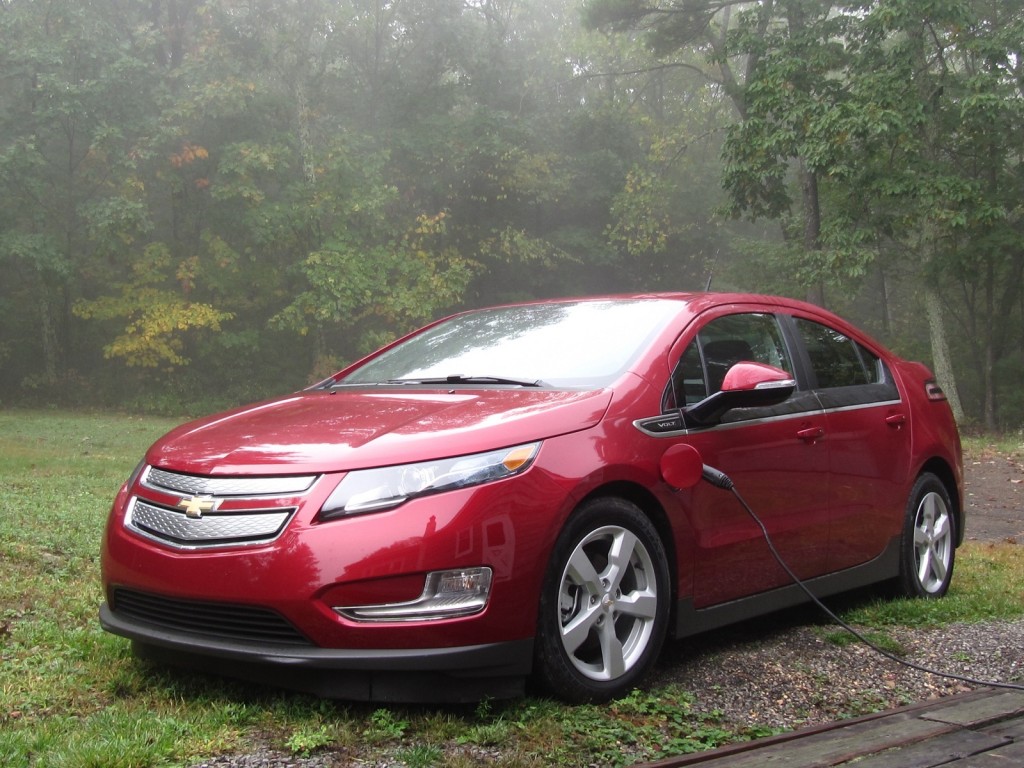China has had difficulty getting its New Energy Vehicle program off the ground for a number of reasons.
While it was initially focused on battery-electric vehicles, buyers have proven more receptive to plug-in hybrids--and virtually every carmaker selling in China will offer one or more in the next few years.
There's just one problem: Many of those plug-in hybrids may never be plugged in.
RELATED: Why I Bought A Prius Plug-In, Not A Volt Or Leaf: A Reader's Choice (Mar 2012)
It's a variant of what some Californian electric-car advocates call "the plug-in Prius problem."
That's the concern that the plug-in hybrid version of the popular Toyota Prius was sold purely to obtain the coveted single-occupancy HOV-lane access sticker.
The Prius Plug-In Hybrid has the lowest electric range of any car with a plug sold in North America, just 11 miles--and only 6 miles is continuous even on the gentle EPA test cycle.

2012 Toyota Prius Plug-In Hybrid - production model
So while drivers of Chevrolet Volts and Ford Fusion or C-Max Energi models can expect 15 to 40 miles of all- or mostly-electric travel, Prius Plug-In drivers may not feel that their 6 to 11 miles is worth the hassle of plugging in.
This website asked Toyota last year for data on the degree to which Prius Plug-Ins traveled in electric mode versus conventional-hybrid mode; the company declined to provide it.
Chevrolet, on the other hand, says two-thirds of all Volt miles are covered on grid electricity, which amounts to 80 percent of trips.
Ford, similarly, says that Energi plug-in hybrid drivers cover 60 percent of their miles on electric power from the grid.
ALSO SEE: Will China Overtake The U.S. In Electric-Car Sales In 2015?
In China, the situation may be tougher yet.
One of the major problems for battery-electric cars in China is that even affluent drivers often live in multiple dwellings, meaning that they must rely on public charging stations to recharge their vehicles.
The same applies to plug-in hybrids, but they need not ever be recharged--even though they receive numerous incentives and special registration privileges from city and regional governments in China.
It's a version of the same issue that transpired in an early fleet of Chevrolet Volts that came up for sale in the used-car market.

2013 Chevrolet Volt, Catskill Mountains, Oct 2012
Those cars proved to have blended gas mileage very close to the car's 37-mpg rating in range-extending mode, meaning that they were rarely if ever plugged in to travel solely on electricity.
It turned out that the company that issued the cars to its employees for business use would reimburse them for the gasoline they bought.
But they didn't reimburse for the electricity the drivers used to recharge the car at home.
MORE: Chevrolet Volts In Fleet Use: Might As Well Not Have A Plug
Upshot: No recharging.
The Chinese experiment with plug-in cars of all sorts is still young, and Chinese government entities have shown in the past that they can change citizens' behavior through a variety of carrots and sticks.
Whether those governments can get their plug-in hybrid New Energy Vehicle drivers to plug in, however, remains an open question.
DON'T MISS: China's BYD Yuan Plug-In Hybrid Mini-SUV: Styling Stolen From Ford?
Meanwhile, the powerful California Air Resources Board is considering changes to its zero-emission vehicle rules that would allot benefits based on electric miles traveled.
That would change the game a lot.
We look forward to seeing what data on the degree of charging emerges as more miles are accumulated on China's new plug-in hybrids.
_________________________________________________












